Tsuchinoko
Posted by: Loren Coleman on October 30th, 2008
Today’s guest blogger Brent Swancer, now living in Japan, shares with us his insights into the cryptid snake Tsuchinoko.
When people think of Japan, they often envision bustling cities and neon lights, industrialization and modernization, a place where every square inch is stuffed with skyscrapers and bullet trains. What many do not realize is that Japan is an intensely mountainous country, with most development occurring in the heavily populated coastal plains. There are vast swaths of remote terrain that is undeveloped and around 90 percent of the population occupies only around 10 percent of the land area. Could there be new species awaiting discovery deep in the mountain forests of this island nation?
One of the most well known of the Japanese cryptids is a type of snake known as the tsuchinoko, also known by a plethora of other regional names such as nozuchi or bachi-hebi (in Northern Honshu), tsuchi-hebi (in Osaka), and many others.
The cryptid Tsuchinoko is said to inhabit the deep, remote mountains of Honshu, Shikoku, and Kyushu islands as well as the Korean peninsula. The Tsuchinoko is reported to be around 2 to 3 feet in length, most commonly reported as being a mottled black or rust color, and with a bright orange belly in many cases. The scales are said to be large and prominent, the mouth resembles a grin, and horns or ears above the eyes are often mentioned.
Perhaps the most unique characteristic of the Tsuchinoko is its appearance, specifically the shape of the body, which is somewhat flat, bulging and rounded in the middle, and tapering off to a short tail. Some reports describe the body as being triangular in the middle rather than round. It is highly poisonous, with the ability to spit venom a considerable distance, yet is peaceful and more likely to flee than attack. Another odd trait worth mentioning is that they are reported to have a particular odor like that of chestnut tree flowers.
The Tsuchinoko has some peculiar ways of getting around. It is reported to move ahead in a straight line, spine undulating up and down as it goes rather than the side to side undulations seen in most other snakes.
The snake is also famous for making spectacular leaps of up to a few meters, often leaping along in one hop after another. Even more bizarre than this are some of the stories that describe the tsuchinoko putting its tail in it mouth and rolling along like a wheel, or even tumbling along end over end (see illustrations). They are also supposed to be good swimmers and very fond of water.
This snake supposedly has an incredibly wide range of vocalizations. It has been said to make chirps, snores, grunts, groans, moans, squeaks, and to even mimic human voices. Old legends claim it could actually converse with people. In fact, the tsuchinoko was mostly portrayed in folklore as being harmless to humans (despite its poisonous nature) except for its great propensity for telling lies and trying to befuddle travelers. The only true way to keep them quiet was to ply them with alcohol, which legends say they have a great fondness for.
The Tsuchinoko has been present in Japanese folklore throughout reported history on the islands. Their likenesses have been found on pottery dating back to the very earliest civilization on the islands, and they are mentioned in the Kojiki (or Hurukotohumi), which dates from 712 and is the oldest known book in existence on ancient Japanese history. In modern days, the Tsuchinoko is a major fixture in pop culture, appearing in commercials, video games, and on a large range of merchandise ranging from Tsuchinoko-shaped candies to hot water bottles. Interestingly they are not presented as evil or scary as Westerners might portray a type of snake. On the contrary, they are almost always made out to be cute, cuddly, and friendly creatures.
So do they really exist or are they just folklore? Some seem to think so.
The Tsuchinoko has been sighted by a wide range of people right up to the present day, usually deep in the mountains far from civilization. In response to the persistent sightings, many areas in Japan have offered huge rewards for the capture of one. The town of Yoshii in Okayama famously offered 20 million yen for one. A place called Mikata, which has the highest concentration of sightings in all of Japan, holds an annual event to look for the snake in the surrounding wilderness but these expeditions have proved fruitless so far. In fact to date, there is a complete lack of any physical evidence at all.
There have been several cases of remains being brought forth but none of them turned out to be anything special. A Tsuchinoko specimen brought in by a mountain villager turned out to be a rat snake and another turned in by a group of loggers was found to be a common grass snake. Yet another case involves a tsuchinoko that was caught by a man who ended up deciding to eat it. Bizarrely, he reported that the snake had a double backbone. Several known hoaxes have been uncovered in recent years as well. Some think that the exorbitant rewards offered in some cases are nothing more than a publicity stunt since people come from all over Japan to participate.
Even so, the sightings continue. What could these eyewitnesses be seeing?
One very common argument is that the sightings are of known species of snakes that have just recently fed. This would give the snake that trademark bulging middle and I can see this as a rational explanation for the Tsuchinoko’s odd appearance. One problem I find with this is that the Tsuchinoko is reputedly able to leap several meters, which would be a very unlikely thing for a snake to be able do in the first place, let alone a gorged snake. In my opinion, none of the types of movement described are very realistic for a snake. The only way I could see the kind of jumping described as being possible is if we are dealing with some sort of gliding snake.
Another explanation often heard is that the reports are misidentifications of the blue tongued skink of the genus Tiliqua. These skinks are easy to keep as pets and are kept by some people in Japan, so it is argued that escaped specimens could be the culprits. This is an interesting hypothesis considering I’ve heard of a version of the Tsuchinoko reported in New Guinea of all places, which is also home to a distinct species of skink that is from the same genus as the blue tongued skink. That seems very intriguing, and the color is certainly right for the Tsuchinoko. The only problems I find with this idea is that the skinks tend to be smaller than the Tsuchinoko reports say and the skinks have legs.
Then there are the sounds the Tsuchinoko is said to make. Snakes aren’t exactly known for their vocalizations, least of all mimicking human voices. While it is true that snakes such as the gopher snake show an ability to produce a wide range of creative hisses, this is a far cry from what the Tsuchinoko is reportedly able to do. I tend to think that the sounds could be from other insect, birds, or other wildlife, and mistakenly attributed to the snake. It’s possible I suppose that under the right conditions a snake might evolve to have a certain capacity to make some of these sounds, I just find it very hard to believe that one would develop the kind of range supposedly displayed here.
If the Tsuchinoko is real, then it definitely seems possible that some of its traditional characteristics such as mimicking human voices and hoop rolling might be colored by folklore or exaggerated a bit. However, to me that still doesn’t rule out the possibility for new species of snake existing in Japan. A lot of known animals in Japan are shrouded in folklore and superstition so maybe a real animal lies at the heart of the stories of Tsuchinoko as well. If we are talking about a new species of snake, then I would say that based on some of the descriptions the most likely candidate is a new species of Viperdae (true vipers), or Crotalidae (pit vipers), specifically the Agkistrodon genus which includes cottonmouths and copperheads.
About Loren Coleman
Loren Coleman is one of the world’s leading cryptozoologists, some say “the” leading living cryptozoologist. Certainly, he is acknowledged as the current living American researcher and writer who has most popularized cryptozoology in the late 20th and early 21st centuries.
Starting his fieldwork and investigations in 1960, after traveling and trekking extensively in pursuit of cryptozoological mysteries, Coleman began writing to share his experiences in 1969. An honorary member of Ivan T. Sanderson’s Society for the Investigation of the Unexplained in the 1970s, Coleman has been bestowed with similar honorary memberships of the North Idaho College Cryptozoology Club in 1983, and in subsequent years, that of the British Columbia Scientific Cryptozoology Club, CryptoSafari International, and other international organizations. He was also a Life Member and Benefactor of the International Society of Cryptozoology (now-defunct).
Loren Coleman’s daily blog, as a member of the Cryptomundo Team, served as an ongoing avenue of communication for the ever-growing body of cryptozoo news from 2005 through 2013. He returned as an infrequent contributor beginning Halloween week of 2015.
Coleman is the founder in 2003, and current director of the International Cryptozoology Museum in Portland, Maine.

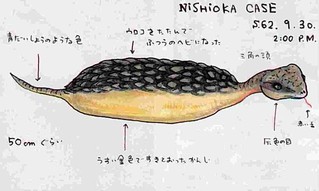
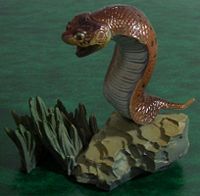
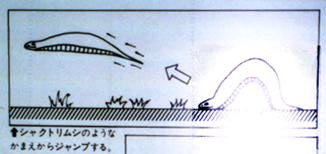
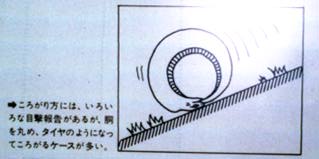
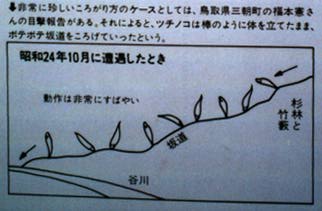









Excellent article! Thanks for guest posting, this is fascinating.
Thank you, Ceroill. I appreciate it very much! 🙂 I’ll probably have more stuff up on here very soon further detailing some of the sightings, search expeditions, and the bodies that were found of supposed tsuchinokos that I mentioned in the article above.
Great post!
The mountainous areas of Japan must be a lot like the mountainous areas here: lots of people, sure, but most of those people in the valleys and along waterways, with lots of wild, relatively unpopulated country “back in the sticks”.
Usually where there are folk tales, there is a real animal behind them. I agree, none of the extreme behaviors described here are likely to attributable to real snakes. But they are similar to some of the folk tales told about real snakes here, so there’s no reason to think that the snakes couldn’t exist, even though the tales are patently fables.
p.s. I wonder if mystery_man will comment on this post 😉 ?
Kittenz- Looks like I beat you to it. 🙂 Thanks for the compliment about this piece.
The mountains of Japan and the population dynamics involved are exactly like what you mentioned. Really when you get right down to it, the vast majority of land area in Japan is actually underdeveloped mountainous regions, with most of the population packed into a comparably much smaller area. There really is quite a lot of remote terrain here.
I’m glad you brought up the snake myths in America, because that is a very interesting aspect of these stories for me. It is intriguing that properties attributed to the tsuchinoko, such as rolling along with tail in mouth, are so similar to the historical accounts of “hoop snakes” in the United States. Its fascinating for me how these two far flung places independently developed such similar folklore and stories for the same type of animal.
Fascinating, thanks for posting it.
There may very well be a species or even several species of snake undiscovered in Japan. The Gaboon Viper is shaped very much like the snake mentioned here. I think what is going on here is a rare species of normal snake being spotted once in a while and humans beings then fabricating the false Pokémon type talents just for a good story.
In parts of North Carolina they claim that the cotton mouth water moccasin stands on the tip of its tail and whistles while swaying back and forth. Same type of thing, real snake false Pokémon type talent.
I also find the convergence of folk tales fascinating. MM, correct me if I’m wrong, but it seems to me as an outside observer with admittedly limited view that the Japanese culture is unique in its having adopted so many of its traditional scary monsters as cute and cuddly cultural figures today. Do you think there’s a parallel to what happened over time to ‘fairy folk’ in Britain?
Cerroill- That’s a very good observation. I’ll try to give some insights that I have.
It seems the transformation of some folkloric animals such as the Tsuchinoko into cute characters, (or “cuteification” if you will 🙂 ) is mostly a modern phenomena here in Japan. I think one of the driving factors behind the trend for making these creatures cuddly and cute is what I like to call the “Kawaii factor”. “Kawaii” means “cute” in Japanese and popular culture here puts a high premium on cuteness. If you go to Japan, you are sure to hear groups of girls loudly and constantly gushing “Kawaii!” about all manner of things, and there is a big marketing incentive to make things as cute as possible. So what you end up having is creatures like the tsuchinoko, kappa, tanuki (a real animal), and many others being made into cute, cuddly characters. One only needs to look at Japanese merchandise for young people and animated programs featuring these animals to see what I mean. So in that respect, it seems to me to be a cultural phenomena particular to Japan.
Interestingly, although the Tsuchinoko was historically never seen as a menacing creature, if you look at old legends and folklore you will see that other “cute” characters are based on creatures that were quite dark and ominous at one time. I think one could argue that there is a parallel to what happened with the something like the Grimm fairy tales, and how these actually very dark and scary stories were changed over time into cuter, lighter versions for younger or more modern day audiences (Disney anyone?). It seems at least possible that fairy folk underwent the same sort of process, however I do know that the drive to make things cute in Japanese culture is a major reason for the current portrayal of some of these creatures.
I don’t know a whole lot about British folklore, but it is interesting to speculate if there was a similar cultural trend going on with what happened to the fairy folk you mentioned. Perhaps someone here with a good knowledge of old British folklore could give us some insights.
Hope this was helpful!
Thanks, MM! That’s about what I thought. What I was referring to, with British folklore, is that ‘elves and fairies’ were once, long ago, powerful beings, sometimes even gods. As time went on they ‘diminished’, and by Victorian days the ‘fairies’ were tiny cute winged creatures (tinkerbell is a more modern prototype of this), and even ‘elves’ were relegated to being small, cute, though still mysterious (as in the workers in Santa’s workshop). They used to be called ‘the Good Neighbors’ and ‘The Fair Folk’ in appeasement. They were frightening and uncanny. The works of Tolkien have to a degree turned the modern image of elves away from the ‘kawaii’ form of the late 19th century.
I could go on, but those are the basics.
Ceroill- Great information! That seems pretty much exactly like what happened to a lot of folkloric creatures in Japan. Similarly, there are some once powerful and frightening creatures that are now presented as diminished, cute versions of what they once were. It’s an intriguing parallel. Perhaps there are similar underlying reasons at work.
There are also mythological creatures that have still maintained their image as horrible and frightening such as the Japanese trolls, ogres, and “Oni” (devils).
What I find interesting as well is that, where snakes have typically always been presented as evil and scary in most cultures, the Japanese have always regarded the Tsuchinoko as mostly benign, and not known to attack people at all.
MM, I hope someone will correct me if this is wrong, but I seem to recall that a number of Pacific cultures have in the past (If not now) had positive views of snakes, with mythologic snake figures being representative of wisdom and healing. Then again, there is the polarized difference between Asian dragons and European dragons, which may be linked to the views on snakes.
whiteriverfisherman- That’s exactly what I was getting at in the end of the article. It seems to me that what is being described is perhaps a new type of viper, and that various fantastic attributes were attached to it over time.
I think that some of these attributes could have started with a kernel of truth and were not necessarily just made up. For example, someone may have heard an unusual sound, or voices from an unseen person at the same time they came across this rare and unusual looking real snake, then mistakenly attributed the sound to the snake itself. The jumping could have been an instance of the snake making a spectacular strike at prey, which was seen and exaggerated by an eyewitness. The hoop rolling might have originated in someone seeing a snake fall from a ridge and tumble down a hill. This may be a rare enough occurrence to witness that the person was left with the impression that the snake could move by rolling along.
Often in simpler times, people would attribute things they couldn’t explain to the supernatural, or try to rationalize what they saw in some other way that may not jibe with our current scientific understanding of the world. So I think that while some of the Tsuchinoko’s characteristics could have a grain of truth buried under all the folklore, it is important to try and look at this creature in terms of what it could be biologically realistic to be.
Considering that, I am left with the impression that we could perhaps be dealing with a new type of snake (or a known one under certain circumstances) that just happened to get spruced up by all of the old stories. Like you humorously said, real snake, false pokemon type talent. I am certain that it is feasible a new type of snake could be present in Japan. I just wish there was more tangible evidence.
Interesting info on the cotton mouth in North Carolina. I had never heard of that before.
Very interesting. Thanx.
I have heard about this snake before in the book “monster spotters guide to north america” by scott francis. It is called the “Hoop Snake” and sounds very similar. In the book it is described as an ordinary black snake, but when chasing prey it will grab its tail in its mouth and roll like a wheel.
Maybe its not a snake at all but a type of giant slug or something else…
Great blog!
Keep them coming. I have a lot of faith in the wild things of Japan. I may get to Hokkaido, some day; but it’s nice to know there’s wild in many other places there.
Honshu wolf, anyone? 🙂
Liked the Blog. I have seen the creature in many animes. Often it is portrayed as magical and a very infant form of a dragon with tiny wings and using clouds to fly.
Now how about mysterious sacred cats of Japan!
Excellent blog 🙂 I have been interested in the Tsuchinoko myself since I first heard about it when I moved here in Kyushu and have been making small journeys into the mountains nearby every now and then in hopes to find one 🙂
You are absolutely right about the Kawaii factor. I mean, even I find myself getting caught up in it 🙂 I’ve bought tons of Kappa dolls and figures since I moved here and I think they are simply adorable. However, what most don’t know about Kappas is that they were water demons that would eat your soul after pulling it out of you through your anus….
That’s another Cryptid I would like to look into as well. It’s said that it was based on crocodiles, however, Crocodiles are not known to have existed here in Japan so why would there be a Japanese demon based on them? It’s interesting to say the least 🙂 There were two Caimans caught in Kanazawa but they were said to be pets that were released… Could be that they have been living there all along….
Anyway, keep em coming!